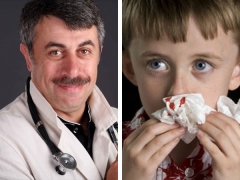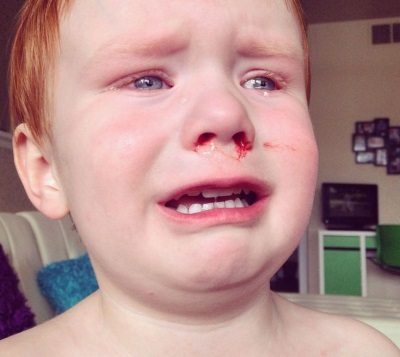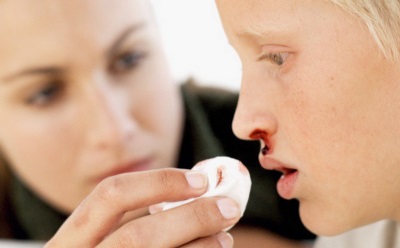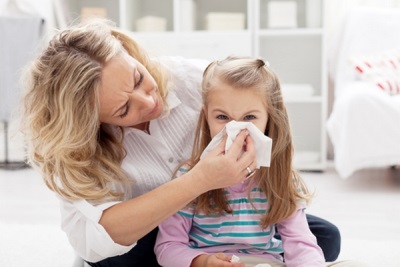Dr. Komarovsky about why blood flows from the nose of a child
Many parents have experienced nosebleeds in their children, but not everyone knows why blood from the nose often flows from childhood, and how to deal with this problem correctly. Let's find out the opinion of Dr. Komarovsky and his tips for parents when bleeding from the nose in children.
The reasons
The famous pediatrician calls the anatomical structural features of the nasal mucosa the main cause of frequent bleeding in children. It is they who cause the appearance of frequent bleeding in some children and the absence of such a problem in other babies. Among the most frequent provocative factors, Komarovsky calls dry air in the room in which the child resides.
According to a popular doctor, because of the dry air, the mucus in the child’s nose dries out and forms crusts, and when the child picks them off, bleeding opens.
In this case, Komarovsky emphasizes, it is a question of bleeding, not caused by trauma (falling, blow), when the reason for the discharge of blood from the baby’s nose is obvious. Excessively dry air becomes the cause of those bleedings that appear suddenly, for no apparent reason.
Increased mucus production in the child’s nose is caused by a viral infection, exposure to an allergen or bacteria, and the drying up of mucus can be caused not only by dried air in the room, but also by taking certain medications (vasoconstrictor, anti-inflammatory, antihistamine, etc.), prolonged fever, inhalation of contaminated of air.
The bleeding itself can begin not only when picking the nose, but also when sneezing, during a walk, inhalation or during sleep - in all cases when the pressure on the nasal septum increases.
However, the cause of the blood from the nose of a child can be much more serious, however, as Komarovsky notes, problems with blood clotting, liver, blood pressure and other serious diseases will never manifest themselves only with nosebleeds. If a baby has any similar disease, it will have other symptoms, such as a skin rash, frequent bruises, headaches, or dizziness.
Urgent Care
When the child began nosebleeds, Komarovsky recommends that you act like this:
- Seat the baby with the body tilted forward. The head of the child should be located straight or be slightly inclined forward.
- The nostrils of the child should be squeezed with fingers and hold for about 10 minutes. Mom or the child can squeeze the nose. While waiting, the child must breathe through the mouth.
The speed of cessation of blood excretion, according to a popular doctor, is primarily affected by the diameter of the vessel, which has been damaged. Also, the duration of bleeding will be determined by the state of the blood coagulation system and the intake of certain medications. In most cases, ten minutes will be enough for normal nose bleeding to stop.
To speed up the stop of bleeding, the doctor recommends a cold, but only if the child can hold his nose on his own (while the mother runs to the kitchen to get something cold). Komarovsky advises to apply ice by attaching it to the nose. You can also give your child an ice cream or cold drink through a straw, since the cold in the mouth also helps to stop the bleeding in the nose more quickly.
In addition, so that the 10 minutes of waiting until the blood stops flowing does not become too long for a child, parents can entertain him with something, for example, turn on a cartoon, read a child or tell a story.
The well-known pediatrician names the main mistakes of parents when assisting a child with nosebleed:
- Tilting the head of the child back. With this action, the blood will drain into the pharynx, so it will be difficult to understand how vascular damage is pronounced, when the bleeding has stopped and whether it has ended at all. In addition, draining blood can provoke a gag reflex.
- Introduction to the nasal passages of cotton swabs. After removing the cotton from the nose, the crust formed at the site of damage to the blood vessels is removed, which causes re-bleeding.
- Laying the child in bed. Komarovsky emphasizes parents' attention to the fact that a child with nosebleeds should not be in a horizontal position.
- Release the baby's nostrils earlier, checking if more blood is flowing. This will only interfere with the cessation of bleeding.
Also, the child during the bleeding should not:
- Blow your nose.
- Cough.
- Speak.
- Swallow blood.
- Move actively.
If 10 minutes have passed, the mother let go of the nostrils, and the bleeding is still ongoing, all actions should be repeated for another 10 minutes. If after twenty minutes from the beginning of nosebleeds it has not stopped, the child should be shown to the doctor.
Komarovsky also advises not to hesitate to seek medical help if:
- The blood of a child stands out from two nostrils at once.
- The child also has bleeding from another part of the body, for example, from the ear.
- Bleeding from the nose is repeated very often.
In the following video, the doctor makes detailed recommendations in assisting with nosebleeds in a child, and also tells about the frequent mistakes of parents in such situations.
In all these cases, the famous pediatrician advises to hold the nostrils and call an ambulance, or to seat the child in the car in order to quickly take it to a health facility.
Prevention
To prevent the child from having frequent nosebleeds of a non-traumatic nature, Komarovsky recommends:
- Humidify the air and remove dust from the room so that the mucus in the nose does not dry out.
- Give your child a lot of drinking.
- If the baby already had nosebleeds, do not use drugs that can dry the mucosa in the treatment.
- Do not allow the child to poke around in the nose.
- Moisten the mucosa with saline or oil solutions of vitamins E and A.
- Take blood tests regularly.
- Do not allow the child to strain for a week after bleeding from the nose.














